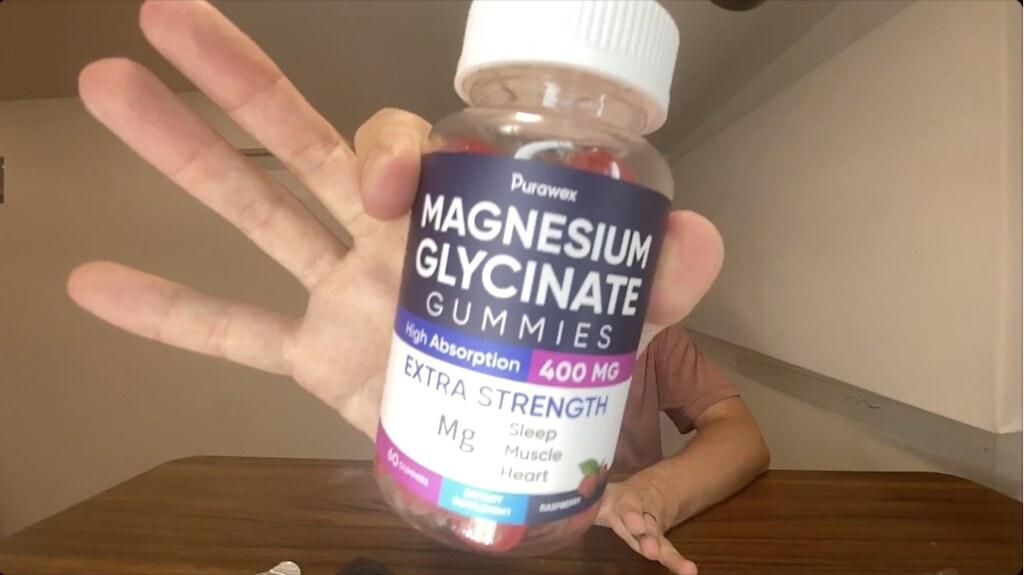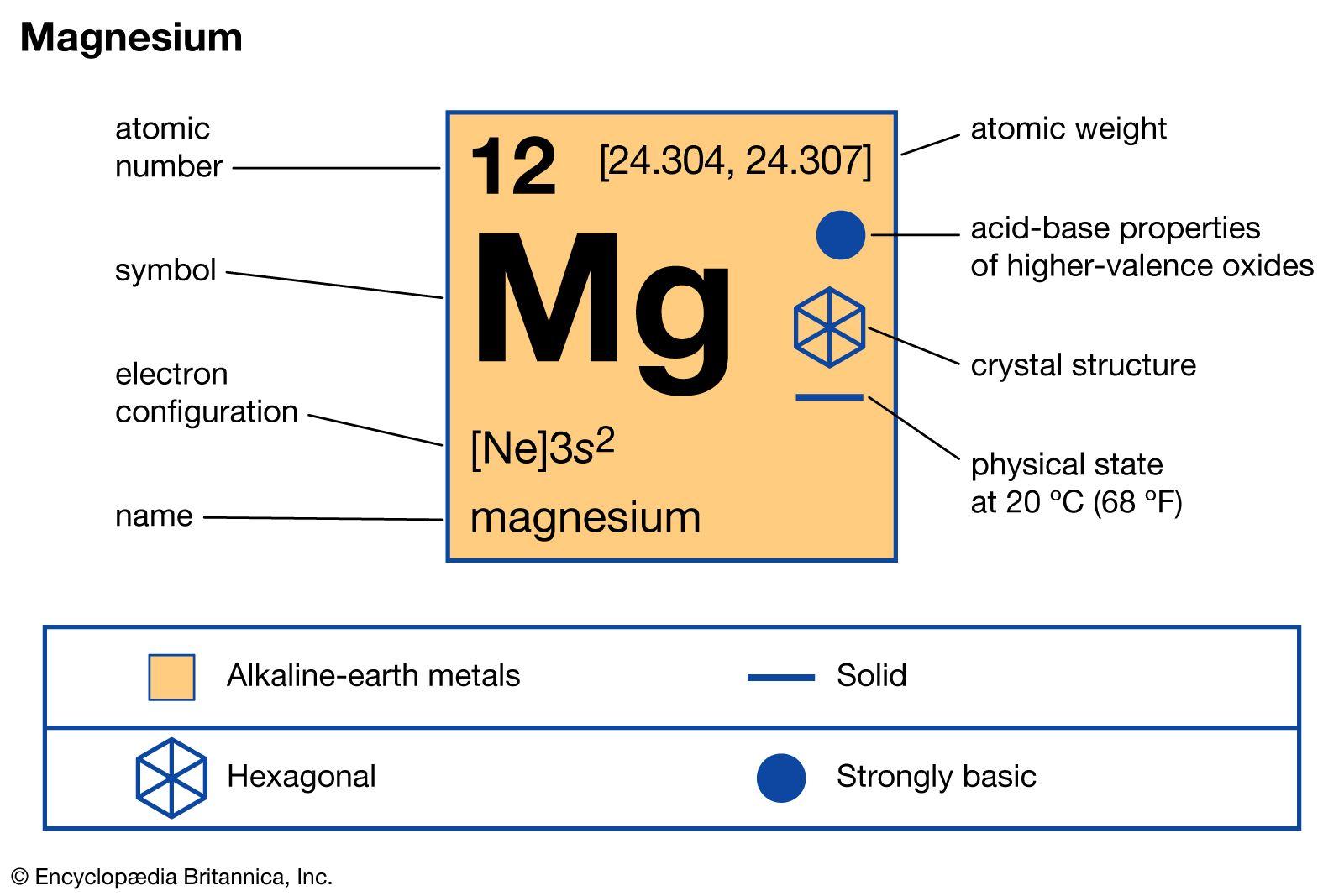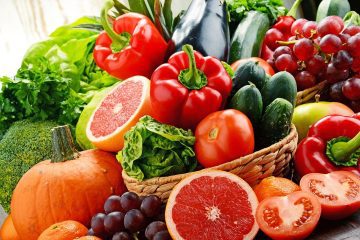Table of Contents
- The Role of Magnesium in Overall Health
- Top Magnesium-Rich Foods to Include in Your Diet
- How to Maximize Magnesium Absorption from Food
- Delicious Recipes Packed with Magnesium
- Common Symptoms of Magnesium Deficiency and Solutions
- Q&A
- In Retrospect


The Role of Magnesium in Overall Health
Magnesium plays a crucial role in numerous bodily functions, acting as a cofactor for over 300 enzymatic reactions. This essential mineral is involved in energy production, protein synthesis, and the regulation of muscle and nerve function. A balanced intake of magnesium can significantly enhance your well-being, contributing to processes like blood pressure regulation and bone health. A deficiency in magnesium can lead to various health issues, such as fatigue, muscle cramps, and even anxiety. Thus, maintaining adequate magnesium levels is vital for sustaining overall vitality.
Incorporating magnesium-rich foods into your diet is an excellent way to ensure you receive this essential nutrient. Some of the top dietary sources include:
- Leafy Greens: Spinach, kale, and Swiss chard
- Nuts and Seeds: Almonds, cashews, and pumpkin seeds
- Whole Grains: Brown rice, quinoa, and oats
- Legumes: Black beans, chickpeas, and lentils
- Fatty Fish: Salmon, mackerel, and halibut
For those looking to boost their magnesium intake, a simple table summarizes the magnesium content in common foods:
| Food Item | Magnesium Content (mg per 100g) |
|---|---|
| Spinach | 79 |
| Almonds | 268 |
| Black Beans | 70 |
| Quinoa | 64 |
| Mackerel | 97 |
By opting for these nutrient-dense foods, you can effectively enhance your magnesium levels, support your metabolic functions, and foster your overall health. Make magnesium-rich meals a part of your daily nutrition, and enjoy the multitude of benefits this vital mineral has to offer.


Top Magnesium-Rich Foods to Include in Your Diet
Incorporating magnesium-rich foods into your daily menu can significantly enhance your health and wellbeing. Among the best sources of magnesium are leafy greens, nuts, seeds, and whole grains. Spinach, for example, is not only versatile for salads but also rich in this essential mineral. Add it to your smoothies or omelets to make the most out of its nutritional benefits. Other greens like kale and Swiss chard also contribute to your magnesium intake while providing an array of vitamins and minerals.
Nuts and seeds are snack-time heroes packed with magnesium. Almonds, cashews, and pumpkin seeds not only satisfy cravings but boost your intake as well. Incorporate these into your morning yogurt, sprinkle them over salads, or enjoy them as simple snacks. For a nutritious boost, consider preparing a homemade trail mix with a mix of nuts, seeds, and perhaps a few dark chocolate chips for a delightful treat.
Whole grains are another fantastic source to consider, with options like quinoa, brown rice, and oats standing out. Quinoa is particularly noteworthy, as it contains all nine essential amino acids and is a great plant-based protein source. A delicious quinoa salad, perhaps mixed with diced vegetables and a light vinaigrette, can serve as a nourishing lunch. For breakfast, try oatmeal topped with nuts and fruits for an energizing start to your day.
| Food Item | Magnesium Content (mg per 100g) |
|---|---|
| Spinach | 79 |
| Almonds | 268 |
| Quinoa | 64 |
| Dark Chocolate | 327 |


How to Maximize Magnesium Absorption from Food
To enhance the amount of magnesium your body absorbs from food, it’s essential to consider not just what you eat, but how you prepare and consume it. Soaking nuts and seeds overnight can significantly improve magnesium absorption by eliminating phytic acid, a compound that inhibits mineral absorption. Additionally, integrating magnesium-rich foods like leafy greens, legumes, and whole grains into your diet can create a robust foundation. You might consider trying recipes that blend these items, such as a quinoa salad mixed with fresh spinach and sunflower seeds.
Another effective strategy is to balance your diet with nutrients that support magnesium absorption, particularly vitamin D and calcium. Foods rich in vitamin D, such as fatty fish or fortified dairy products, can enhance magnesium uptake. Incorporating foods like dairy or almonds can provide both calcium and magnesium, complementing each other in your meals. Prioritizing whole foods over processed options ensures that your magnesium sources are potent and readily available to your body.
Moreover, hydration plays a crucial role in optimizing magnesium absorption. Staying well-hydrated helps transport magnesium throughout the body and assists in cellular processes. Consider the following hydration tips:
- Drink plenty of water throughout the day.
- Include magnesium-rich beverages like herbal teas or smoothies.
- Limit caffeine and alcohol, as they can hinder mineral absorption.
| Food Item | Magnesium Content (mg per serving) |
|---|---|
| Spinach (cooked, 1 cup) | 157 |
| Almonds (1 oz) | 76 |
| Black beans (cooked, 1 cup) | 60 |
| Avocado (1 medium) | 58 |
| Quinoa (cooked, 1 cup) | 30 |


Delicious Recipes Packed with Magnesium
Incorporating magnesium-rich foods into your diet can be both delicious and satisfying. Start your culinary adventure with a quinoa salad filled with nutrient-dense ingredients. Combine cooked quinoa with chopped spinach, roasted sweet potatoes, and a handful of pumpkin seeds. Drizzle with a lemon-tahini dressing for a zesty finish. Quinoa serves as an excellent source of magnesium, providing not only flavor but also a hearty texture to your salad.
Another fabulous option is a chickpea curry that is both comforting and full of flavor. Sauté onions, garlic, and ginger in coconut oil, then add canned tomatoes and a can of drained chickpeas. Spice it up with cumin, turmeric, and a pinch of salt. Let it simmer until thickened, and finish off with a sprinkle of fresh cilantro. Serve it over brown rice for an extra magnesium boost, turning a simple dish into a delectable and nutritious meal.
Lastly, don’t overlook the power of dark chocolate as a sweet treat. Choose a bar that contains at least 70% cocoa to maximize magnesium content. Enjoy it as an energizing snack or incorporate it into recipes like a chia seed pudding. Combine almond milk, chia seeds, and a few squares of melted dark chocolate, stir, and chill until it thickens. This delightful dessert not only satisfies your sweet tooth but also complements your magnesium-rich diet wonderfully.


Common Symptoms of Magnesium Deficiency and Solutions
Magnesium plays a crucial role in numerous bodily functions, and its deficiency can manifest in various symptoms that can greatly affect your well-being. Common signs to watch for include:
- Muscle Cramps and Spasms: Often experienced during exercise or at night, these involuntary contractions can be a clear indicator of low magnesium levels.
- Fatigue and Weakness: A sense of constant tiredness can signal a deficiency, as magnesium is vital for energy production.
- Mental Health Issues: Magnesium deficiency has been linked to anxiety and depression, highlighting its importance in neurological function.
Addressing magnesium deficiency involves a combination of dietary changes and possibly supplementation. Incorporating magnesium-rich foods into your diet is one of the best ways to ensure adequate intake. Consider adding these foods:
| Food Source | Magnesium Content (mg per 100g) |
|---|---|
| Spinach | 79 |
| Almonds | 268 |
| Black Beans | 70 |
| Quinoa | 64 |
While dietary sources are essential, in some cases, supplements may also be required to meet daily magnesium needs. When considering supplementation, it’s vital to consult with a healthcare provider to determine the appropriate dosage and form for your specific condition. In addition to food and supplements, lifestyle changes such as reducing stress levels and improving sleep quality can also enhance magnesium absorption and retention in the body.
Q&A
Q&A: Exploring Foods Rich in Magnesium
Q1: Why is magnesium important for our health?
A: Magnesium is a vital mineral that plays numerous roles in the body. It is essential for energy production, muscle contraction, and nerve function. Additionally, magnesium supports bone health, helps regulate blood pressure, and contributes to DNA synthesis. A well-balanced intake of magnesium can enhance overall well-being and help prevent various health issues.Q2: What are some common signs of magnesium deficiency?
A: Magnesium deficiency can manifest in several ways. Common signs include muscle cramps, fatigue, nausea, and irritability. More severe deficiencies may lead to symptoms such as numbness, abnormal heart rhythms, and changes in mood. If you’re experiencing these symptoms, it might be worth assessing your magnesium intake.Q3: Which foods are the best sources of magnesium?
A: Numerous foods are excellent sources of magnesium. Some of the top contenders include:- Leafy Greens: Spinach, kale, and Swiss chard are packed with magnesium and can easily be added to salads or smoothies.
- Nuts and Seeds: Almonds, cashews, pumpkin seeds, and sunflower seeds are not only tasty snacks but also rich in magnesium.
- Whole Grains: Brown rice, quinoa, and whole wheat bread offer substantial amounts of magnesium and other essential nutrients.
- Legumes: Black beans, lentils, and chickpeas are great plant-based sources of magnesium and can be incorporated into various dishes.
- Dark Chocolate: A delicious indulgence, dark chocolate with a high cocoa content is surprisingly rich in magnesium.
Q4: How can I ensure I get enough magnesium in my diet?
A: Ensuring adequate magnesium intake involves incorporating a variety of magnesium-rich foods into your meals. Aim for a balanced diet filled with fruits, vegetables, whole grains, nuts, and seeds. If you’re concerned about your magnesium levels, consider consulting with a healthcare professional who can provide personalized recommendations.Q5: Can supplements help if I’m not getting enough magnesium from food?
A: While magnesium supplements can be beneficial for those with diagnosed deficiencies or specific health issues, it’s generally best to source nutrients from whole foods. Supplements might come with side effects or interact with medications, so it’s essential to consult a healthcare provider before starting any new supplement regimen.Q6: Are there any risks associated with consuming too much magnesium?
A: Excess magnesium from food sources is typically not a concern since the body can manage and regulate it effectively. However, overconsumption from supplements can lead to toxicity, resulting in symptoms such as diarrhea, nausea, and cramping. It’s important to stick to the recommended daily intake and consult with a healthcare professional if considering supplementation.Q7: What lifestyle changes can enhance magnesium absorption?
A: Certain lifestyle factors can influence how well your body absorbs magnesium. Staying hydrated, reducing high sodium intake, and minimizing excessive alcohol or caffeine consumption can all contribute to improved magnesium absorption. Additionally, a well-rounded diet promoting gut health can help maximize nutrient uptake.Q8: Can I boost my magnesium levels by cooking food a certain way?
A: The cooking method can affect the magnesium content in foods. For example, overcooking vegetables can lead to nutrient loss. Steaming or lightly sautéing leafy greens can help preserve their magnesium levels. Similarly, soaking and sprouting grains and legumes can enhance not only magnesium bioavailability but also increase overall nutrient content.Q9: What are some delicious recipes that incorporate magnesium-rich foods?
A: Here are a couple of ideas to get you started:- Spinach and Quinoa Salad: Toss cooked quinoa with fresh spinach, diced bell peppers, nuts, and a light vinaigrette for a refreshing, magnesium-packed meal.
- Dark Chocolate Chia Pudding: Mix chia seeds with almond milk, raw cocoa powder, and a touch of honey. Let it sit overnight to absorb the nutrients, creating a delicious and nutritious dessert.
Feel free to dive into these questions, and don’t hesitate to explore the delightful world of magnesium-rich foods to enhance your health!




0 Comments